Solar System: Things To Know This Week
Solar System: Things to Know This Week
Here are a few things you should know about our solar system this week:
1. Gearing Up for a Grand Finale

There’s just a year left until the Cassini mission begins its Grand Finale – the final phase of its mission, during which the spacecraft will dive repeatedly between the planet and the rings. To get ready, the Cassini team has launched an enhanced, mobile device-friendly version of the mission website. The site includes information about Cassini, Saturn, the moons and the rings – but it also tells the human stories behind one of the most ambitions expeditions of all time.
2.Caught in Transit

On Monday, May 9, the planet Mercury will cross directly in front of the sun, an event that hasn’t occurred since 2006 and won’t happen again until 2019. Find out how to watch HERE.
3. A Moon for Makemake

Our Hubble Space Telescope has spotted a small, dark moon orbiting Makemake (pronounced “MAH-kay MAH-kay). Make make is the second brightest icy dwarf planet – after Pluto – in the faraway Kuiper Belt.
4. The Age of the Aquarids

The Eta Aquarid meteor shower is the first of two showers that occur each year as a result of Earth passing through dust released by Halley’s Comet. This year, it should peak on the night of May 5/6. Get tips for watching HERE.
5. The Southern Lights of Saturn

On May 4, Cassini will reach periapse, the closest point to Saturn in the spacecraft’s orbit. At about this time, Cassini’s cameras will monitor Saturn’s south polar aurorae, and also image the bright limb of the planet to better understand its upper haze layers.
Want to learn more? Read our full list of the 10 things to know this week about the solar system HERE.
Make sure to follow us on Tumblr for your regular dose of space: http://nasa.tumblr.com
More Posts from Carlosalberthreis and Others
Solar System: Things to Know This Week
Our solar system is huge, let us break it down for you. Here are a few things to know this week:
1. Juno Eyes on Jupiter

After a journey of more than five years, the Juno spacecraft is ready for its detailed look at Jupiter—arrival date: July 4. Using Eyes on the Solar System and data from the Juno flight team, you can take a virtual ride onboard the spacecraft in the “Eyes on Juno” simulation.
2. Taking a Spacecraft for a Spin

Preparations for the launch of the OSIRIS-REx asteroid mission are spinning up, literally. Here, the spacecraft can be seen rotating on a spin table during a weight and center of gravity verification test at our Kennedy Space Center. Liftoff is scheduled for Sept. 8. This spacecraft will travel to a near-Earth asteroid called Bennu and bring a small sample back to Earth for study.
3. Long-Range (Or at Least Long-Distance) Weather Report
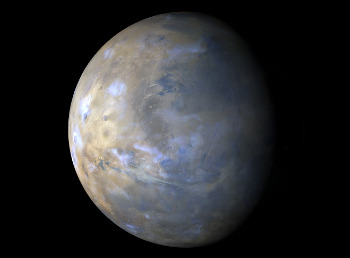
Our Mars Reconnaissance Orbiter acquires a global view of the red planet and its weather every day. Last week, dust storms continued along the south polar ice cap edge. Northern portions of Sirenum, Solis, and Noachis also experienced some local dust-lifting activity. A large dust storm propagated eastward over the plains of Arcadia at the beginning of the week, but subsided just a few days later over Acidalia.
4. Hello from the Dark Side

The New Horizons spacecraft took this stunning image of Pluto only a few minutes after closest approach in July 2015, with the sun on the other side of Pluto. Sunlight filters through Pluto’s complex atmospheric haze layers. Looking back at Pluto with images like this gives New Horizons scientists information about Pluto’s hazes and surface properties that they can’t get from images taken on approach.
5. A Titanic Encounter
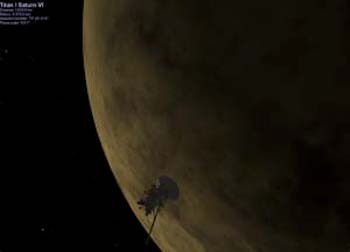
On June 7, our Cassini orbiter will fly very close by Saturn’s giant, haze-shrouded moon Titan. Among the targets of its observations will be the edge of the vortex that swirls in Titan’s thick atmosphere near its south pole.
Want to learn more? Read our full list of the 10 things to know this week about the solar system HERE.
Make sure to follow us on Tumblr for your regular dose of space: http://nasa.tumblr.com
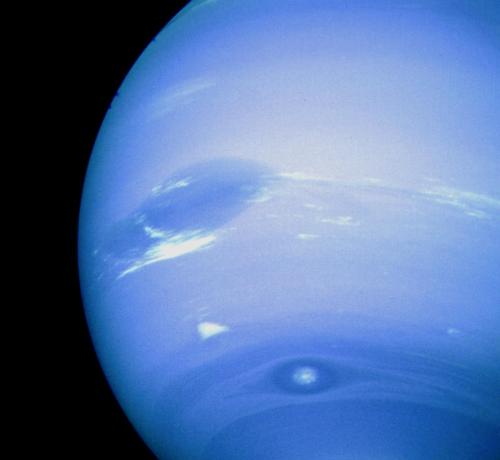
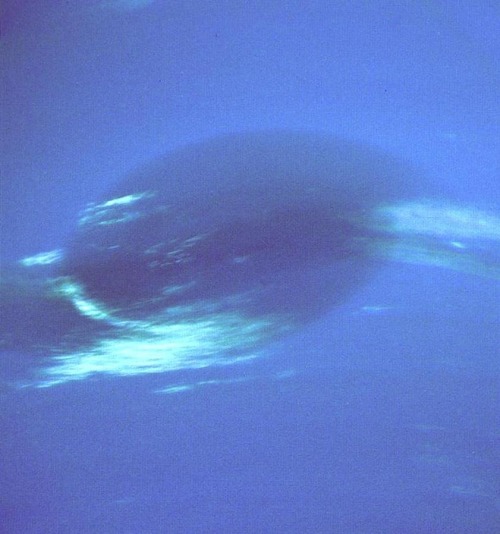
This photograph of Neptune was reconstructed from two images taken by Voyager 2’s narrow-angle camera, through the green and clear filters. At the north (top) is the Great Dark Spot, accompanied by bright, white clouds that undergo rapid changes in appearance.
Credit: NASA
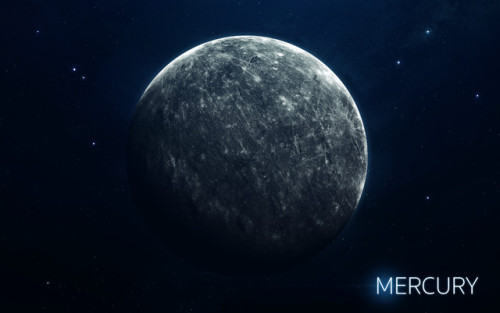
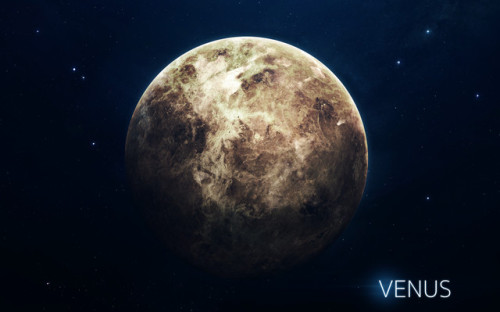
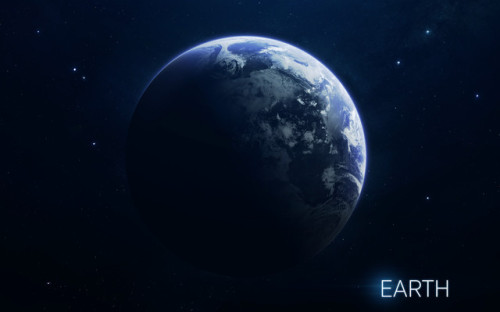
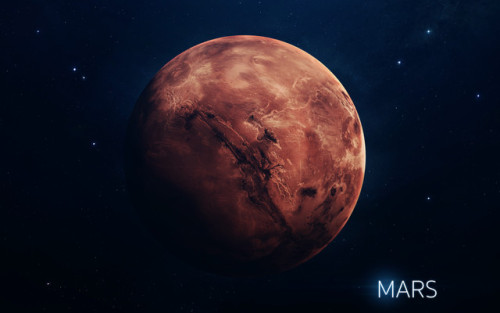
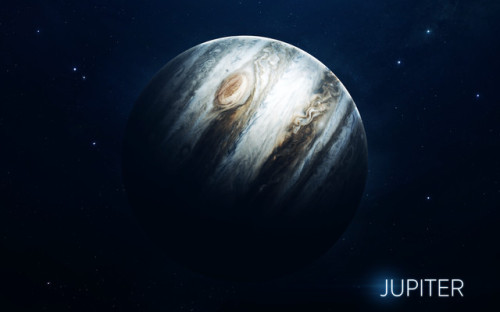

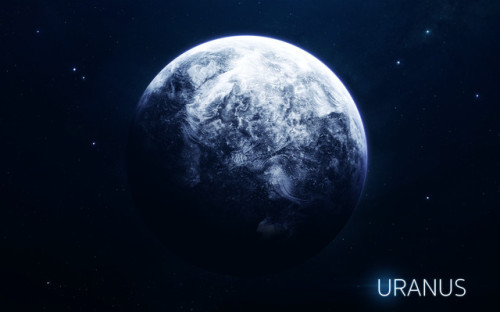
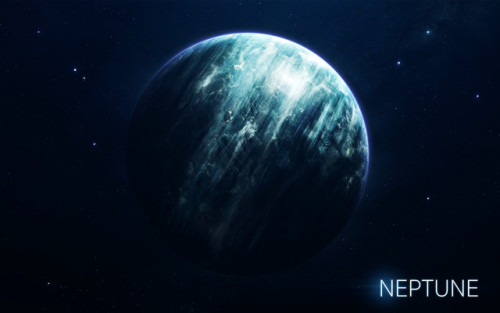
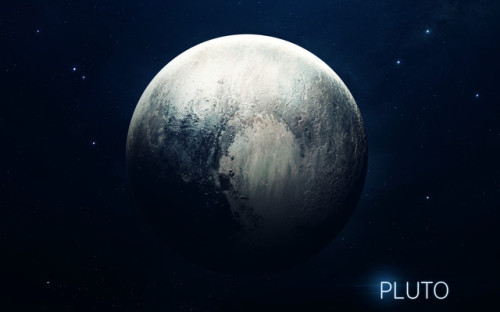
Berries - Vadim Sadovski
A Origem das FRBs - Fast Radio Bursts - Space Today TV Ep.1070
Talvez um dos maiores mistérios da astronomia possa estar perto de ser solucionado.
Quem lembra do meu vídeo de retrospectiva de 2017 deve lembrar que eu falei que o ano de 2017 foi um ano interessante para um fenômeno conhecido como FRBs, ou Fast Radio Bursts.
Esses fenômenos são explosões rápidas que acontecem no comprimento de onda de ondas de rádio, são fenômenos raros de serem observados e muito intrigantes.
Chegou-se até a pensar que poderiam ser sinais emitidos por civilizações extra-terrestres.
Um desses fenômenos é especial, e é conhecido como FRB121102.
É um evento de FRB que se repete, mais de 200 explosões de alta energia foram registradas desse único evento.
Em 2017 os pesquisadores conseguiram publicar qual é a origem desse evento, uma região de formação de estrelas numa galáxia anã, localizada a cerca de 3 bilhões de anos-luz de distância da Terra.
Embora a localização tenha sido descoberta, o mistério ainda residia sobre a origem.
O que causa um evento desses?
Um grupo de pesquisadores resolveu então estudar os sinais recebidos desse evento de FRB e descobriram algo interessante, que essa explosão tinha uma propriedade conhecida como polarização.
E esse efeito de polarização permitiu que os astrônomos estudassem o ambiente da fonte que gerou essa FRB.
O ambiente da FRB 121102 possui um campo magnético intenso em um plasma de grande densidade.
Isso foi possível descobrir pois a polarização sofreu uma perturbação muito intensa, perturbação essa que é causada pela presença de um campo magnético muito forte.
Sabendo também que a duração das explosões dessa FRB varia de 30 microssegundos a 9 milissegundos, os astrônomos integraram essas informações e chegaram à seguinte conclusão.
A fonte é pequena, com cerca de 10 km de diâmetro, mas que é extremamente densa e que gera um campo magnético intenso.
Isso se encaixa muito bem em estrelas de nêutrons.
Ou uma magentar interagindo com a nebulosa de material expelido pela estrela original.
Ou até mesmo um pulsar.
O mecanismo exato não é conhecido ainda, mas uma coisa é certa, o ambiente onde a FRB foi gerada é único e pode indicar um novo tipo de objeto ou uma nova interação entre dois objetos densos e altamente magnetizados.
Assim, um dos grandes mistérios da astronomia está aos poucos sendo completamente entendido o que é muito importante para entendermos o funcionamento do universo.

❝Sou o povo a triunfar
Sou a força popular
Sou raiz, tradição e saber
A festa do meu boi bumbá❞
Reinventing the Wheel
Planning a trip to the Moon? Mars? You’re going to need good tires…

Exploration requires mobility. And whether you’re on Earth or as far away as the Moon or Mars, you need good tires to get your vehicle from one place to another. Our decades-long work developing tires for space exploration has led to new game-changing designs and materials. Yes, we’re reinventing the wheel—here’s why.
Wheels on the Moon

Early tire designs were focused on moving hardware and astronauts across the lunar surface. The last NASA vehicle to visit the Moon was the Lunar Roving Vehicle during our Apollo missions. The vehicle used four large flexible wire mesh wheels with stiff inner frames. We used these Apollo era tires as the inspiration for new designs using newer materials and technology to better function on a lunar surface.
Up springs a new idea

During the mid-2000s, we worked with industry partner Goodyear to develop the Spring Tire, an airless compliant tire that consists of several hundred coiled steel wires woven into a flexible mesh, giving the tires the ability to support high loads while also conforming to the terrain. The Spring Tire has been proven to generate very good traction and durability in soft sand and on rocks.
Spring Tires for Mars

A little over a year after the Mars Curiosity Rover landed on Mars, engineers began to notice significant wheel damage in 2013 due to the unexpectedly harsh terrain. That’s when engineers began developing new Spring Tire prototypes to determine if they would be a new and better solution for exploration rovers on Mars.

In order for Spring Tires to go the distance on Martian terrain, new materials were required. Enter nickel titanium, a shape memory alloy with amazing capabilities that allow the tire to deform down to the axle and return to its original shape.
These tires can take a lickin’

After building the shape memory alloy tire, Glenn engineers sent it to the Jet Propulsion Laboratory’s Mars Life Test Facility. It performed impressively on the punishing track.
Why reinvent the wheel? It’s worth it.

New, high performing tires would allow lunar and Mars rovers to explore greater regions of the surface than currently possible. They conform to the terrain and do not sink as much as rigid wheels, allowing them to carry heavier payloads for the same given mass and volume. Also, because they absorb energy from impacts at moderate to high speeds, there is potential for use on crewed exploration vehicles which are expected to move at speeds significantly higher than the current Mars rovers.
Airless tires on Earth

Maybe. Recently, engineers and materials scientists have been testing a spinoff tire version that would work on cars and trucks on Earth. Stay tuned as we continue to push the boundaries on traditional concepts for exploring our world and beyond.
Make sure to follow us on Tumblr for your regular dose of space: http://nasa.tumblr.com.
Fotografar um buraco negro, é possível? Óbvio que fotografar o interior de um buraco negro, ou o que acontece além do horizonte de eventos, é algo impossível, pois a partir do horizonte de eventos, nada consegue escapar, nem mesmo a luz.
Agora, fotografar o horizonte de eventos é sim algo possível, porém para realizar esse feito seria necessário um telescópio gigantesco, para se ter uma ideia, para fotografar o horizonte de eventos do buraco negro no centro da Via Láctea, seria necessário um telescópio que tivesse, virtualmente o diâmetro do planeta Terra.
E será que isso é possível? Não só é possível, como está pronto para operar.
A iniciativa se chama Event Horizon Telescope, ou Telescópio do horizonte de Eventos.
O objetivo é integrar os grandes radiotelescópios do mundo, e a através de uma técnica chamada de interferometria e assim conseguir observar o horizonte de eventos do buraco negro supermassivo no centro da Via Láctea.
Para quem não sabe, o buraco negro central da Via Láctea, se chama Sagitarius A*, está localizado a cerca de 26 mil anos-luz de distância da Terra, e obviamente nunca foi observado.
O que se tem são indícios de sua existência devido a observação das estrelas ao redor se movimentando de forma muito rápida, o que sugere um objeto extremamente denso no centro.
O seu horizonte de eventos tem cerca de 20 milhões de km, parece muito, mas na distância que ele está não é nada, é só mesmo, um telescópio do tamanho da Terra é capaz de observar.
O EHT usa uma técnica chamada de VLBI (Very Long baseline array interferometry).
Na verdade a técnica consiste em combinar o poder das maiores antenas de rádio telecópios do mundo todos olhando para um mesmo alvo ao mesmo tempo.
Com a recente adição do ALMA ao EHT sua sensibilidade foi extremamente melhorada.
além dos instrumentos, o local onde ficarão armazenados os dados já está pronto esperando a quantidade enorme de informação. A capacidade de armazenamento é equivalente a de 10000 laptops tradicionais.
Além de tudo isso, obviamente o algoritmo que irá fazer a análise dos dados já está bem desenvolvido.
E para ter uma certeza no sucesso do experimento, simulações já foram rodadas levando em consideração as equações de Einstein.
E o efeito que os astrônomos esperam observar é a sombra do buraco negro na matéria subjacente e quando essa sombra acontecer, o horizonte de eventos se tornará proeminente.
Agora a pergunta que não quer parar? Quando teremos essa imagem?
Os astrônomos pretendem fazer a campanha de observação entre 5 e 14 de Abril de 2017, mas devido à complexidade das análises, provavelmente a primeira imagem só fique pronta em 2018, ah, e só para lembrar não tem nada da NASA nisso.
Além obviamente de fazer a imagem do horizonte de eventos, que será algo extraordinário, esse experimento poderá provar mais uma vez a teoria da relatividade de Albert Einstein. Muitos efeitos só provados teoricamente poderão ser testados nessa observação.
E não existe melhor lugar para testar a teoria da relatividade do que o ambiente extremo nas vizinhanças de um buraco negro.
Será que esse ano conseguiremos esse fato extraordinário? vamos aguardar e estarei aqui anunciando para vocês as novidades.
(via https://www.youtube.com/watch?v=NFRk-1yq86Y)
Boa noite galeraa!!


Muitos observam o pôr do Sol, poucos observam o pôr da Lua, raríssimos são aqueles que contemplam os pôres do Sol e da Lua simultaneamente!
📅 Data de registro: 5 de agosto de 2024 às 18:26
-
 jose251998-blog liked this · 5 years ago
jose251998-blog liked this · 5 years ago -
 harajukumoses liked this · 6 years ago
harajukumoses liked this · 6 years ago -
 cosmic-quark liked this · 8 years ago
cosmic-quark liked this · 8 years ago -
 twiggietruth liked this · 8 years ago
twiggietruth liked this · 8 years ago -
 kuiperkat liked this · 8 years ago
kuiperkat liked this · 8 years ago -
 minogiizhik reblogged this · 8 years ago
minogiizhik reblogged this · 8 years ago -
 iconikuh reblogged this · 8 years ago
iconikuh reblogged this · 8 years ago -
 alienslob liked this · 8 years ago
alienslob liked this · 8 years ago -
 fleurdebach5-blog liked this · 8 years ago
fleurdebach5-blog liked this · 8 years ago -
 mynameiswolke reblogged this · 8 years ago
mynameiswolke reblogged this · 8 years ago -
 gudetama-fion-blog liked this · 8 years ago
gudetama-fion-blog liked this · 8 years ago -
 timeladythewarden reblogged this · 9 years ago
timeladythewarden reblogged this · 9 years ago -
 agentofnightvale-blog reblogged this · 9 years ago
agentofnightvale-blog reblogged this · 9 years ago -
 slutforthe-stars reblogged this · 9 years ago
slutforthe-stars reblogged this · 9 years ago -
 slutforthe-stars liked this · 9 years ago
slutforthe-stars liked this · 9 years ago -
 tobyvansten reblogged this · 9 years ago
tobyvansten reblogged this · 9 years ago -
 alpacasarethegreenestanimals reblogged this · 9 years ago
alpacasarethegreenestanimals reblogged this · 9 years ago -
 alpacasarethegreenestanimals liked this · 9 years ago
alpacasarethegreenestanimals liked this · 9 years ago -
 omega2luv liked this · 9 years ago
omega2luv liked this · 9 years ago -
 naktine reblogged this · 9 years ago
naktine reblogged this · 9 years ago -
 nidesboy-blog liked this · 9 years ago
nidesboy-blog liked this · 9 years ago -
 lachaim liked this · 9 years ago
lachaim liked this · 9 years ago -
 jaegerszn reblogged this · 9 years ago
jaegerszn reblogged this · 9 years ago -
 jaegerszn liked this · 9 years ago
jaegerszn liked this · 9 years ago -
 bpdwandamaximoff reblogged this · 9 years ago
bpdwandamaximoff reblogged this · 9 years ago -
 bpdwandamaximoff liked this · 9 years ago
bpdwandamaximoff liked this · 9 years ago -
 mythicalmagistra liked this · 9 years ago
mythicalmagistra liked this · 9 years ago -
 rose-in-a-fisted-glove liked this · 9 years ago
rose-in-a-fisted-glove liked this · 9 years ago -
 everyonesfavoriteyid reblogged this · 9 years ago
everyonesfavoriteyid reblogged this · 9 years ago -
 janothar reblogged this · 9 years ago
janothar reblogged this · 9 years ago -
 theconstellationsinyourskin liked this · 9 years ago
theconstellationsinyourskin liked this · 9 years ago
